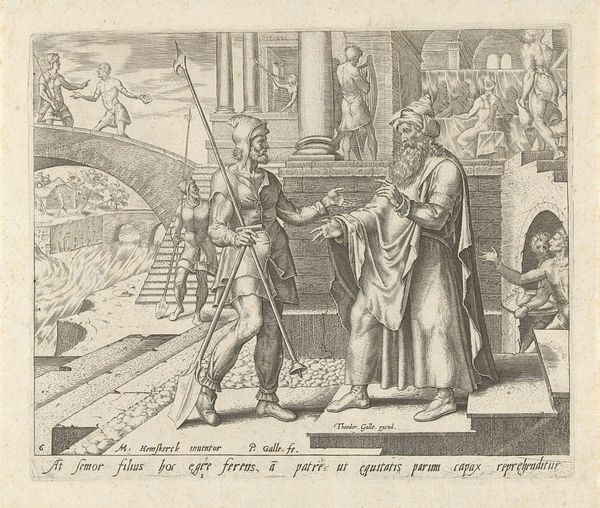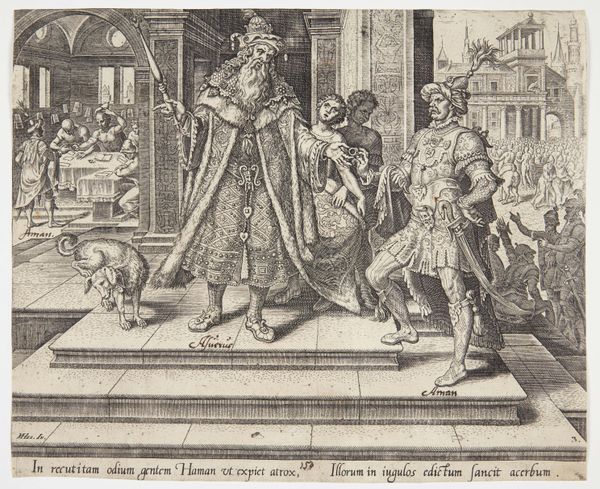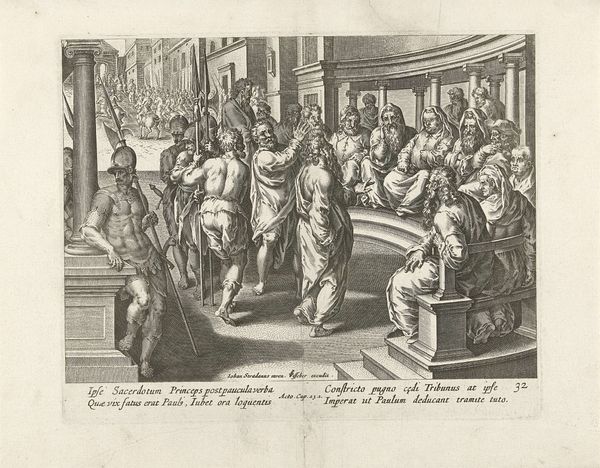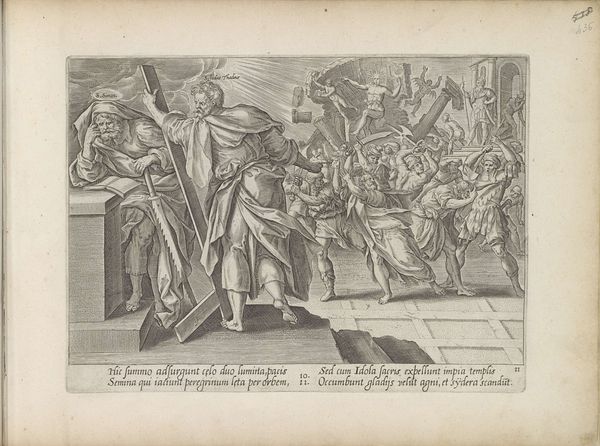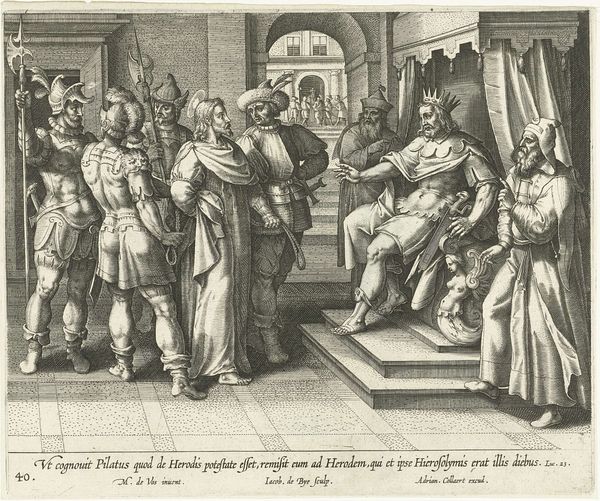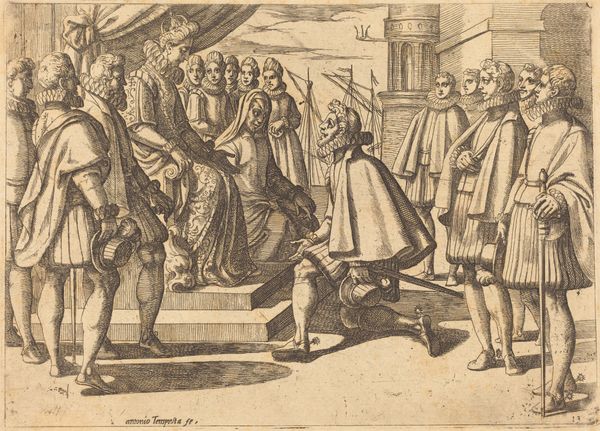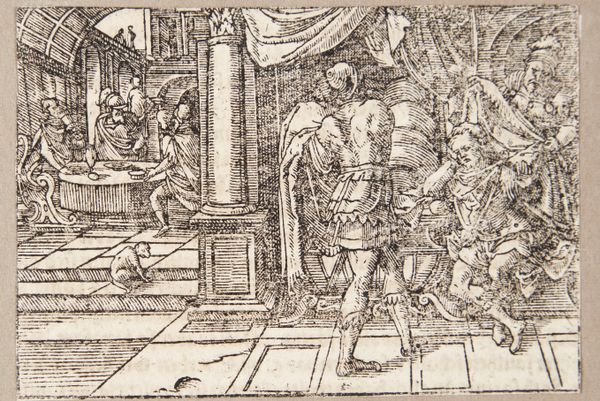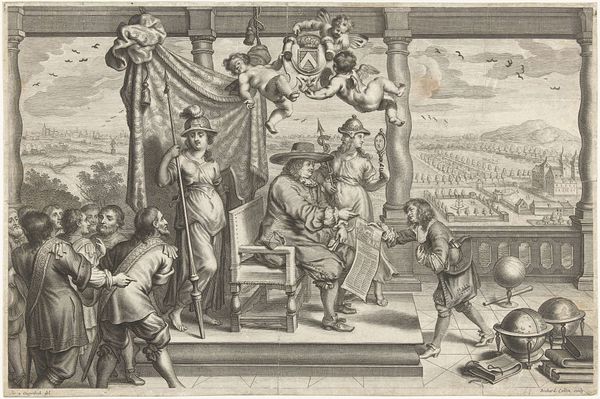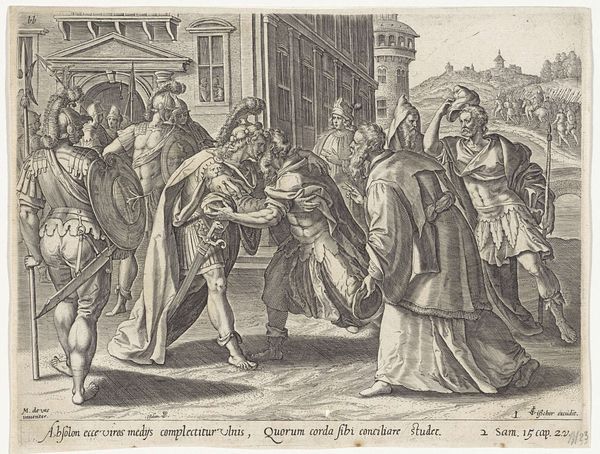
print, intaglio, engraving
# print
#
intaglio
#
mannerism
#
history-painting
#
academic-art
#
engraving
Dimensions: height 202 mm, width 245 mm
Copyright: Rijks Museum: Open Domain
Curator: Philips Galle created this engraving, "Ahasveros geeft Haman toestemming de Joden uit te roeien," in 1564. It's currently held in the collection of the Rijksmuseum. The scene looks quite dramatic, doesn't it? There's a palpable tension, almost theatrical. Editor: Yes, that tension really comes through. My first thought is that the weight of power is pressing down on those figures in the center. There's a heavy, patterned robe and all that ornamentation—it speaks volumes about social hierarchy and the material signs of authority at that time. Curator: Absolutely. The image draws heavily from the Book of Esther. We see Ahasuerus granting Haman permission to exterminate the Jews. The body language is so telling. Haman leans in, almost eagerly, as Ahasuerus gestures with cruel indifference. Editor: Look at how Galle uses line. The engraving technique itself would require immense labor, meticulous execution to build up the image, detail by detail. You see the luxury of labor expressed in this medium, the intense level of craft it involves, the cultural value they place on artisanal engraving skills. And that dog! Even that poor animal knows what is going on, a moral signal placed next to this horrible edict that the image tells. Curator: And beyond that, Galle uses the visual vocabulary of the time to connect the scene to ideas about justice and power. Notice the architecture in the background and the crowded town beyond it—this isn't just a personal exchange, it is one of societal consequence with religious symbolism. Editor: I hadn't considered how much the background adds to the symbolism here. It is full of wealth. Curator: What strikes me the most, in revisiting this piece, is how timeless themes of prejudice and power remain so powerfully conveyed. Galle captures this story with such depth—it truly speaks to the artist's insight and the potency of enduring symbols. Editor: For me, reflecting on Galle’s process – the labor, the materials, the societal value placed on skilled craft—reveals how material choices always mediate how narratives are crafted, controlled, and circulated. A humbling consideration indeed.
Comments
No comments
Be the first to comment and join the conversation on the ultimate creative platform.
